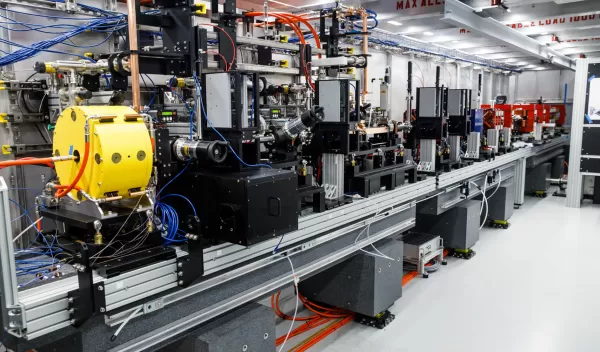
NSF announces infrastructure investment to enable understanding of material structure at scales from macroscopic to atomic
Alexandria, Virginia: The U.S. National Science Foundation announced $90.8 million in funding for a Mid-scale Research Infrastructure-2 award to Arizona State University to create a Compact X-ray Free-Electron Laser, or CXFEL, facility. This investment is a component of NSF’s ongoing support for cutting-edge science and engineering research infrastructure to support innovative research.
"The Mid-scale RI-2 program fills an important niche in NSF's research infrastructure portfolio, funding projects whose costs lie between $20 and $100 million," said NSF Chief Officer for Research Facilities Linnea Avallone. "The projects in this series of awards, of which CXFEL is the first, will bring much needed state-of-the-art tools to a broad range of research communities, combining cutting-edge science with unique training opportunities for future scientists from very diverse backgrounds. The diverse collaborators on this project include a Hispanic-serving institution lead and 15 other organizations in 11 states, two of which are EPSCoR jurisdictions."
This investment will support the construction of instruments capable of examining the internal structure of material at an atomic level. The facility’s suite of ultrafast photon beams will probe the dynamics of diverse biological processes such as photosynthesis in plants, DNA repair and protein functions. This unique set of probes will also measure the subtle physics of quantum materials that may lead to breakthrough technologies such as novel superconductors that would revolutionize energy production and storage or quantum computers. The project will provide deep multidimensional information needed for transformative discoveries in a wide range of disciplines, including biology, chemistry and condensed matter physics.
Unlike previous X-ray free electron laser facilities, which use multi-kilometer accelerators, CXFEL will be implemented in a room-scale facility with an approximately 10-meter beam line. The X-rays produced by the new instrument will be bright, tunable light with synchronized waves and pulse durations in the extremely fast attosecond time range so that investigators can probe the finest details of atomic interactions and molecular motion in complex materials using a range of different techniques. This advanced design is the result of years of effort among the collaborating scientists, including prior involvement in an NSF Science and Technology Center.
For decades, NSF has invested in research infrastructure that advances science and engineering. The Mid-scale Research Infrastructure-2 awards support projects with scientific merit that have a modest footprint with a large impact and address scientific or societal concerns. The program supports mid-scale research infrastructure, including facilities, networks, equipment, datasets and staff. Past awards represent a broad geographic distribution of institutions, including EPSCoR jurisdictions, and diverse alumnae, including women, early-career researchers, underrepresented minorities and persons with disabilities.
Other Mid-scale Research Infrastructure-2 awards will be announced as they are issued in the coming months.
To learn more about Mid-scale Research Infrastructure-2 investments, visit nsf.gov.
